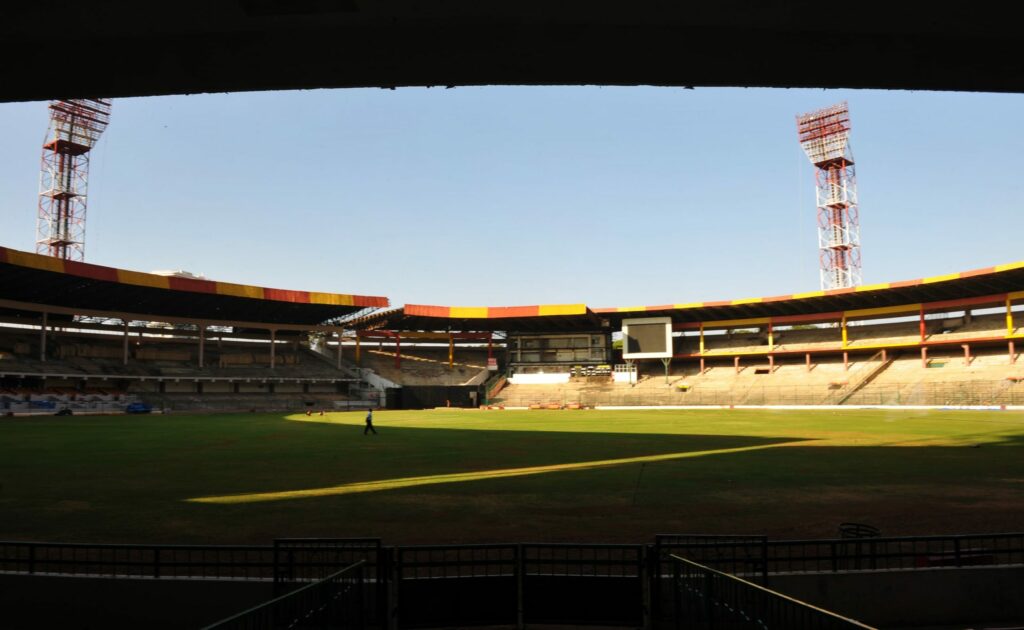The pitch used for the second and final India-Sri Lanka Test match in Bangalore’s iconic Chinnaswamy Stadium has received a “below average” rating from the International Cricket Council. The venue has also been handed one demerit point for producing an inappropriate deck for the pink-ball D/N Test match.
Thirty-nine wickets fell inside two and a half days, of which 16 fell on the first day itself, on what was a turning track with variable bounce. The extra lacquer and gloss on the pink ball that enables extra skid off the deck did not help the batters’ case. But most of the vicious turn had to do with the cracks that were visible even in the first session of play on Day 1.
Interestingly, the “below average” rating for the surface has been given by a local lad in Javagal Srinath, the former India pacer and now an ICC match referee, who felt the surface made for an imbalanced contest between the bat and the ball.
“The pitch offered a lot of turn on the first day itself and though it improved with every session, in my view, it was not an even contest between bat and ball,”
said Srinath, also a former Karnataka State Cricket Association office bearer, in an ICC media release issued on March 20.
303/9 declared in the third-innings by India was the highest team score in the match where an average wicket fell for less than 46 runs and 12 overs.
There were notable individual batting efforts from Shreyas Iyer, Rishabh Pant and Dimuth Karunaratne, who produced an outstanding final-innings hundred for Sri Lanka. But largely, the bowlers ruled the roost and that led to a very early finish.
Iyer, who was handed the ‘Player of the Match’ honours for his skillful knocks of 92 & 67 in the Test match, had said the surface was “not that great” in terms of how it played for spinners and pacers alike. While spinners got consistent sharp turn off various lengths, pacers enjoyed uneven bounce that dented the batters’ footwork.
“You saw the players who defended the ball, there was a lot of chance of nicking, and there was variable bounce on that wicket.
“You can’t just play very negatively on that wicket and just keep defending the ball. You’ve got to have that positive intent when you step out on the field. The wicket is not that great. It’s obviously bowler-friendly,”
Iyer was quoted as saying by ESPNcricinfo after the first day’s play.
Srinath’s rating and report for the surface published by the ICC has also been submitted to the BCCI, which would be expected to push that forward to the KSCA as the venue has now gotten one demerit point according to ICC’s Pitch and Outfield Monitoring regulations.
Importantly for KSCA, the demerit points remain active for a five-year rolling period and as per ICC laws, if a venue accumulates five such demerit points in this timeframe, it becomes liable for severer punishment and will be suspended from hosting any international cricket for a period of 12 months.
In recent weeks, Bangalore is the second venue to get a below-average rating for a Test surface it has laid out in the Asian subcontinent. The track in play for the first Test in Rawalpindi between Pakistan and Australia also received the below-average tag, and the venue got handed out one demerit point.
The only difference being that the one in Bangalore played excessively bowler-friendly, while the surface used in Rawalpindi was super flat and aided over 1,100 runs for the loss of only 14 wickets.


